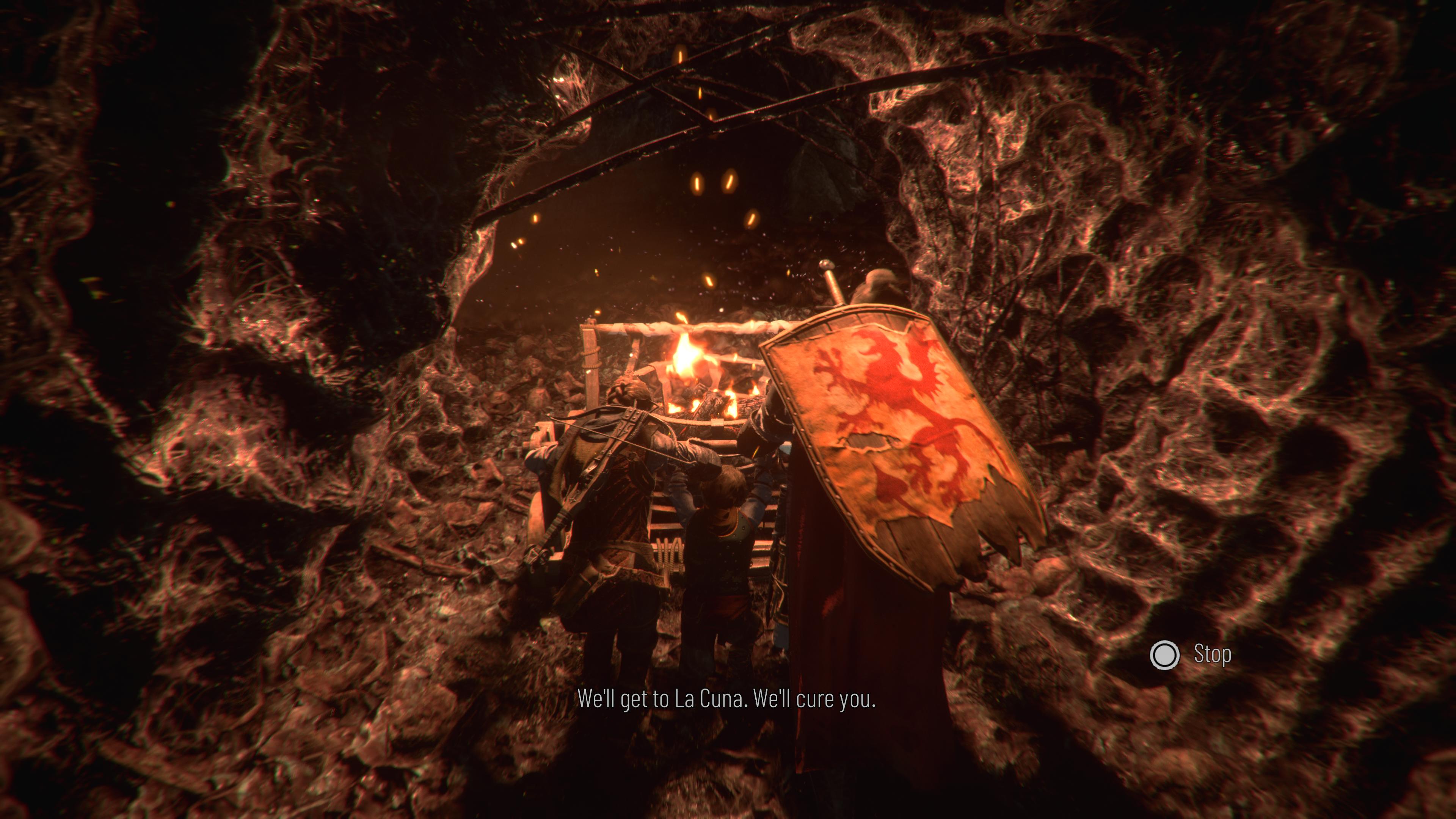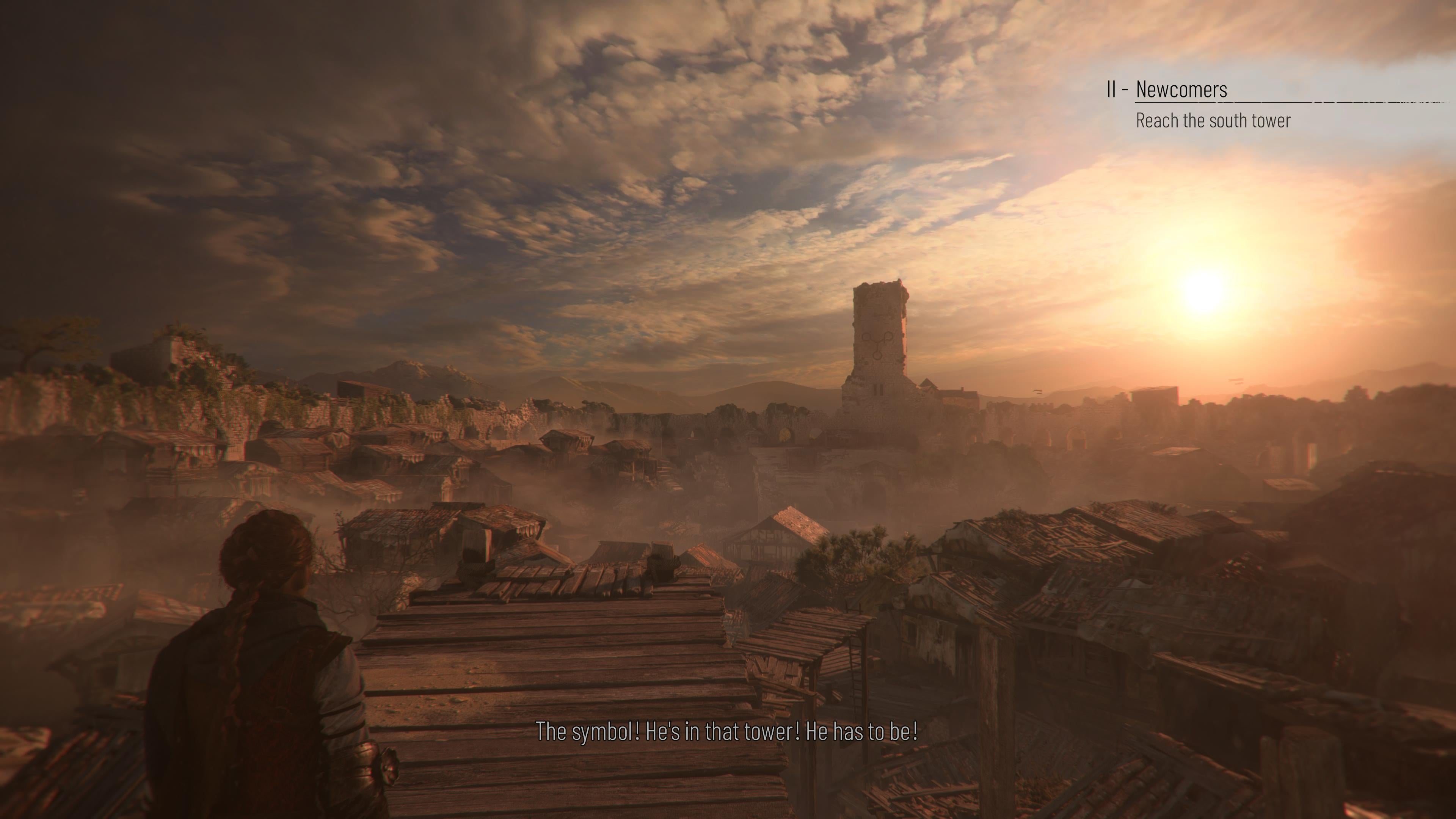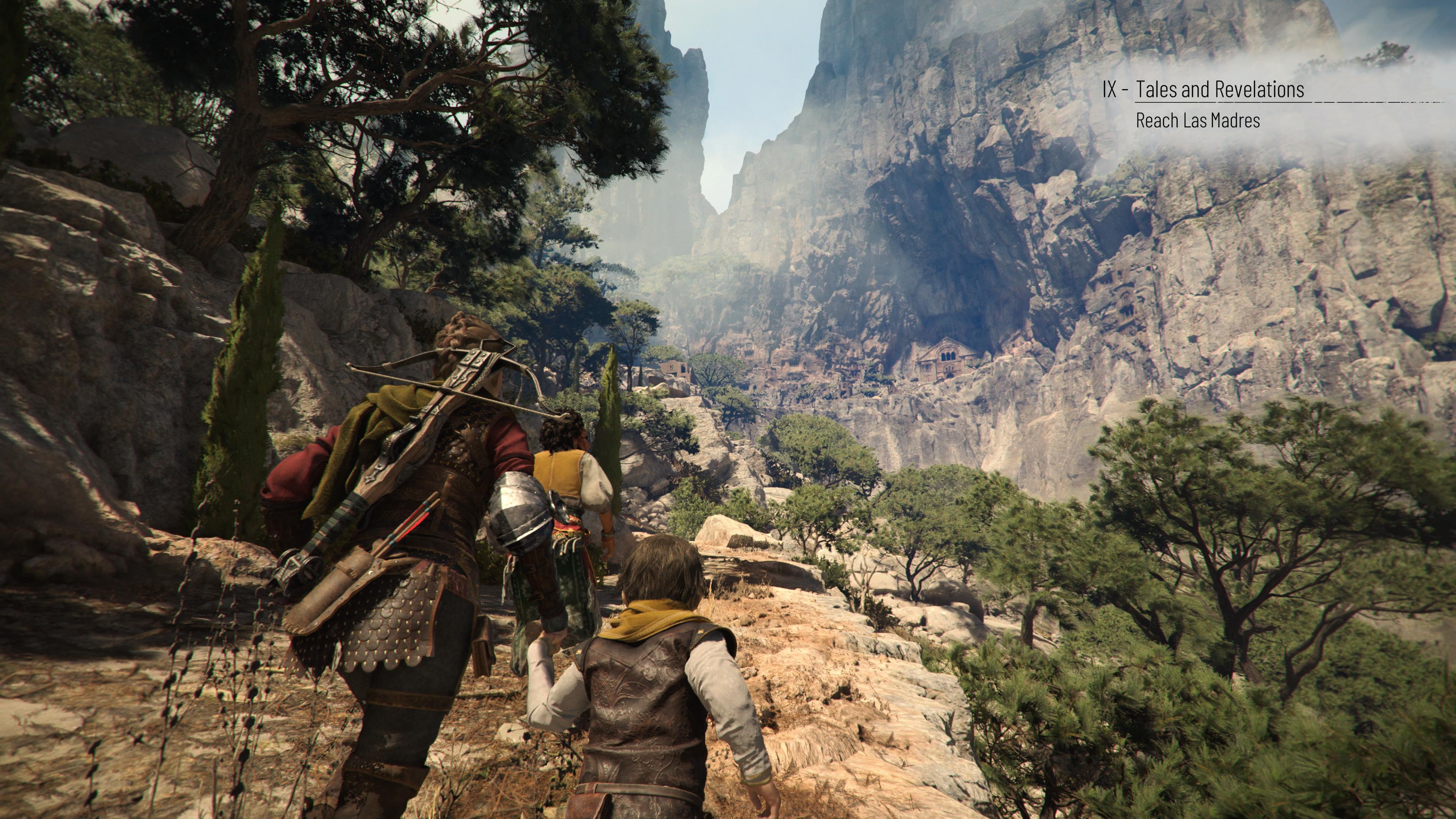A Plague Tale is a series inextricably tied to the Plague, the Black Death, which ravaged Europe in the 14th Century and apparently killed as many 200 million people. It was the plague carried, infamously, by rats. And so it is that A Plague Tale is also a series about rats - wonderfully and gruesomely so. More specifically, it’s a series about a young boy called Hugo who has something called the Macula inside of him, a supernatural bond with the rats. And it’s a bond that people are trying to exploit and control - powerful people in powerful, shady orders - and a bond that will also kill him if you, his teenage sister Amicia, don’t find that cure. This is how Requiem - much like A Plague Tale: Innocence from 2019 - begins. For a while, things are peaceful, and you, Hugo, your mother and her apothecary apprentice Lucas travel to a new life in a new city. But it isn’t long until before you run into trouble and find yourself chased by murderous adults again. And then come rats and the Plague. And suddenly there’s death and repugnant gore all around you and you’re literally knee-deep in it. And as before, the nuts and bolts of the game are stealth. This is not a game about reckless gunplay, like Uncharted, but about carefully picking your way through areas while taking down one or two - sometimes more - enemies who stand in your way. But you don’t take them down as you would in another stealth game - there is one stealth takedown but it’s very situational and loud and so, not often used. This is because you, Amicia, are a teenager, and the game constantly reminds you that you cannot easily beat an adult soldier toe to toe in a fight. Instead, the primary tool you’ll use is your trusty sling, flinging rocks at them - killing unhelmeted enemies - or creating distractions. Amicia’s family’s background in herbalism also means she can make special kinds of ammunition, to ignite things or extinguish them or attract rats. Why would she want to do that? Because rats can work for you as much as they can against you. Light is the key: stay in a lit area, whether by sunlight or firelight, and the rats won’t get to you. That means if you extinguish an enemy’s torch, the rats will get to them. Requiem goes a step further with a couple of new tools. The most potent of these is a crossbow, which is an out and out killer, providing an enemy is not armoured. But bolts are rare. You also now have companions, some of which, like a soldier, will fight and kill for you. Hugo, meanwhile, can directly control hordes of rats. So companions are enormously helpful. But they won’t always be with you. Think of them more as variation than a gradual layering-on of tools. It’s this stealth side of the game I was most concerned about. I found it frustrating in a recent preview build of the game as I died over and over. It felt too rigid to me and too fond of punishing me when I didn’t do what it wanted me to do. The game is at its most annoying when an enemy spots you and alerts all the other enemies in the area, leaving you either to sprint away in the desperate hope you’ll find the exit-door of the scenario, or to perform a stunning counter-attack (you can stab enemies but it will use up a knife and knives are rare). But too often, this ends with a pile-on, and you’re locked in place by forced animations while enemies attack and eventually kill you. And too often, it feels like once you’re spotted by more than one enemy, you’re dead. Two or three sections in particular I didn’t write nice things about in my notebook, to put it mildly. But I’ve softened a bit having played the full game. One reason why is that I was better introduced to the options available to me here, and there is usually always something you can do in a pinch. There’s also a deal more leniency built into the formula than I’d realised. You have a buffer of time before an enemy will properly notice and come after you, for example, and it is actually possible to run away and hide again. It’s much easier to enjoy the stealth battlefields - and the inquisitive enemies who can climb and look under tables and come into the long grass - with this in mind. The other reason is that, in the wholeness of the game, there’s much more variation than there was before, in Innocence, meaning you get more of a reprieve from stealth. Chapters usually only contain one, maybe two, stealth sections, then surround them with some puzzling (which usually involves manipulating rats), some exploration and dialogue, and then some very impressive endless-runner style climaxes where you run away from apocalyptic torrents of rats. This structure also allows more space for the stronger parts of Requiem to come through: the scenery and the story and the characters that propel it. The companions in particular are wonderful - well rounded, believable and brilliantly performed. I particularly like the game’s tendency not to over act and get swept away in melodrama. And the undoubted champion of this, and star of the show, is Amicia, whom the game hangs upon. To give the breadth of performance Charlotte McBurney does, while managing to remain likeable and sympathetic, is very impressive. And she’s still only 20 years old. I hope she’s recognised for it. And it’s in Amicia’s fierce love for Hugo, and their clinging to each other in a world which would separate them, even kill them, that Requiem lands its most powerful blows. It’s Amicia’s desperation to save Hugo that underlines everything. You are the main characters, but is what you’re doing right? You can feel the game questioning you, questioning your actions. Innocence, really, was a game about running away and staying hidden, perhaps as the title suggests. But Requiem has a much more vengeful side, and you’ll feel the consequences of your killing as companions are shocked and even repulsed by you. It’s a deep and moving exploration of love and fear. It gives the game a substance that will linger long after the spectacle of it. And it is spectacular. The eye for period detail Asobo has, whether in crumbling masonry or worn clothing, or just in recreating the daily life of 14th Century France before you, is mesmerising. And it combines with dramatic weather effects and enormous scenery and set-pieces - and an incredible array of atmospheric sound effects and music - to stunning effect. It’s all of this mushed together that adds up to a package of exquisite quality, and a game that stands comfortably shoulder to shoulder with gaming’s other giants of cinematic spectacle. Requiem, simply put, is one of the finest adventures around.






